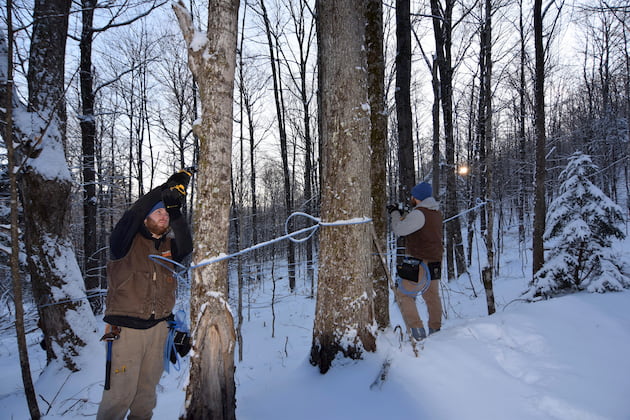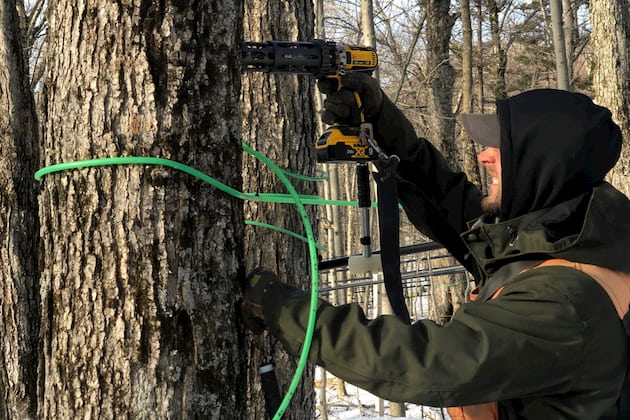Tapping & Tubing
Avoid stained wood when tapping
UVM’s Isselhardt guides Hoosier sugarmakers on tapping brown wood
By PETER GREGG | AUGUST 6, 2020
NEW CASTLE, Ind.—Sugarmakers are encouraged to use longer drops, shallower tapholes and spend more time looking for good tapping surface when they begin tapping for the 2021 season.
That's the message from University of Vermont Extension maple specialist Mark Isselhardt when he spoke to Indiana producers during the annual meeting of the Indiana Maple Syrup Producers Association in New Castle, Ind. last winter.
“You will get 75 percent less sap if you tap into stained wood,” Isselhardt said.
Indiana sugarmakers who tend to use sap bags or buckets rather than pipeline in their flat woods are better suited to spend time seeing how each tree is producing.
“On buckets you know what each tree is doing whereas on tubing it all blends,” he said.
UVM researchers have conducted extensive studies on tapping into dead wood and the results are dramatic.
He said sugarmakers need to make sure they are tapping far away from last year’s taphole to avoid brown, non-conductive wood.
Isselhardt dismissed some of the old folklore about tapping on the south side of a tree or always tap over a big root.
“Theres no proof any of that works,” he said.
What is certain is that every taphole will create non-conductive wood around it for future seasons. It is up to the sugarmaker to determine where that stained wood might be and avoid it. Usually the stains run vertical to the old taphole but not always.
When drilling holes look for white shavings instead of brown. Isselhardt left it to the discretion of the sugarmaker on what to do if you hit brown wood.
“Some people may drill a second hole but keep in mind if you decide to put a second taphole in you might run afoul of certified organic rules,” he said.
Sugarmakers are encouraged to promote growth in the woods because each year the tree generates a new layer of conductive tissue that will eventually yield sap.
Isselhardt said at the Proctor Maple Research Center in Underhill, Vt. the rules for tapping including limiting to only one tap per tree, using long drop lines of 30 to 36 inches or more and occasionally tapping below the lateral line.
Even then, Isselhardt said tappers still hit about 2 to 3 percent of stained wood.
“Try to maximize the tapping area as much as possible,” he said.

































